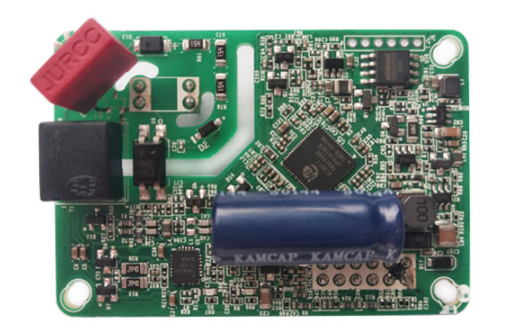Good PCBA processing factories also have a certain understanding of the research and development of PCBA products. These experiences can help PCBA processing factories to better serve customers and increase mutual trust. Introduce the development process of PCBA products.
PCBA processing
1. Market research/needs analysis/project establishment
Through market research, product managers will produce a demand document, stating user pain points or industry needs, analyzing solutions, and describing logical relationships clearly through text or graphics.
After the requirements analysis stage, you can enter the project approval.
2. Prototype and interaction design/APP development
According to the requirements document, the product manager will design the prototype diagram, including the structural layout of functions, the design of each sub-page and the design of the business logic between the pages, and finally output the prototype design diagram. UI designers will perform interface-related color matching design, function specific processing, interaction design, and adaptation of various models and systems to the prototype design, and finally output high-fidelity design drawings.

The APP engineer will develop the interface according to the high-fidelity design drawing; the server engineer will write the API interface, the server environment setup and the database design; the APP engineer will dock with the server at a certain stage of development, obtain data through the server interface, and write functions The logic code above.
3. Hardware development
After the product project is approved, the hardware engineer needs to select the hardware platform according to the needs, and evaluate it in terms of functional requirements, performance requirements, technical support, cost evaluation, and availability.
The evaluation of hardware functions and performance requirements is mainly the selection of the main chip, which requires specific analysis and comparison of main chip resources, storage capacity and speed, IO port allocation, and interface resources. After the main chip is determined, other key components need to be determined according to the diversity function to achieve the optimal performance and cost of the overall solution. After the main chip is determined, the details of the design of the software driver layer are basically determined.
After the overall hardware plan is determined, then enter the development stage: hardware schematic design, PCB board design and production, BOM list, PCB board placement.
3.1 Schematic design
3.2 PCB design
PCB design
After the PCB is made, 2 to 4 single boards need to be welded to the software engineer for debugging, and the functional modules of the schematic design are debugged. After debugging, if there are adjustments in the principle and PCB wiring, then the first step is required. Second cast board.
The cycle and chain of making a hardware product is longer than simply making a software product, and hardware is a technical job that relies heavily on experience. Any trial and error will have to pay high costs, and only rich experience can avoid detours. The stability of the hardware platform is the cornerstone of product stability. Only when the cornerstone is stable can the richness of software development be supported.
4. Embedded software development
The general process of embedded software development is requirements analysis, software outline design, software detailed design, software implementation and software testing. The main difference from general software development is that the compilation and debugging of software implementation are cross-compilation and cross-debugging.
After the requirements are clarified, the detailed software design can be carried out first: software architecture design, function function interface definition (function function interface complete function, data structure, global variable), and each function function interface calling process when completing the task. After completing the detailed design of the software module, it enters the specific coding stage. Under the guidance of the detailed design of the software module, the software coding of the entire system is completed.
After the software engineer gets the hardware PCBA board, he will use the designed PCBA to carry out software verification and actual debugging, find the actual and theoretical detailed problems, and improve the deficiencies in the design process.
5. Industrial and structural design
Industrial design mainly deals with the appearance design of the product, is the proportion coordinated, and does the product look beautiful? Manuscripts often express the creator’s ideas quickly.
After the appearance is determined, the structural engineer will design the internal structure according to the size of the PCBA board, considering the reliability, strength and waterproof performance.
6. Small batch trial production/public beta/mass production
In the small batch trial production, production engineers need to track SMT patch and assembly process issues, optimize the test process, increase the production yield, and pave the way for mass production.
Some electronic components will have abnormal parameters at special temperatures, causing the entire product to malfunction or malfunction; some products will not start or turn on at all when the temperature is tens of degrees below zero; some products At high temperatures, the capacitance or resistance value will have physical changes, which will affect the quality of the product.
For a small batch of products, we need to perform reliability and performance tests such as functional testing, stress testing, performance testing, anti-interference testing, product life testing, high and low temperature testing.
After a small batch of trial-produced products, part of the products will be put into R&D testing and reliability testing, and some products will be put into public testing, directly facing the trial and evaluation of seeds.
After verification by R&D testing and public testing, after confirming that there are no problems in all processes of the product, the product can be put into mass production.
7. Quality Feedback/Big Data Analysis
After the product is put into the market after mass production, after a period of use (usually 3-6 months), users may feedback hidden or small-probable problems that cannot be found in the test. Then R&D will conduct detailed analysis based on specific cases to find the root cause To improve and optimize the product.
The above is an introduction to the PCBA product development process